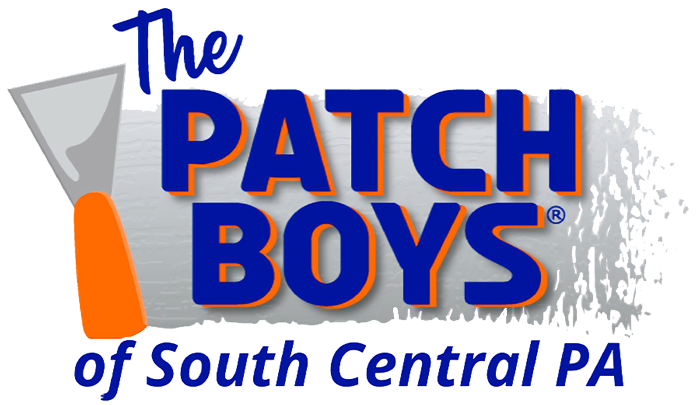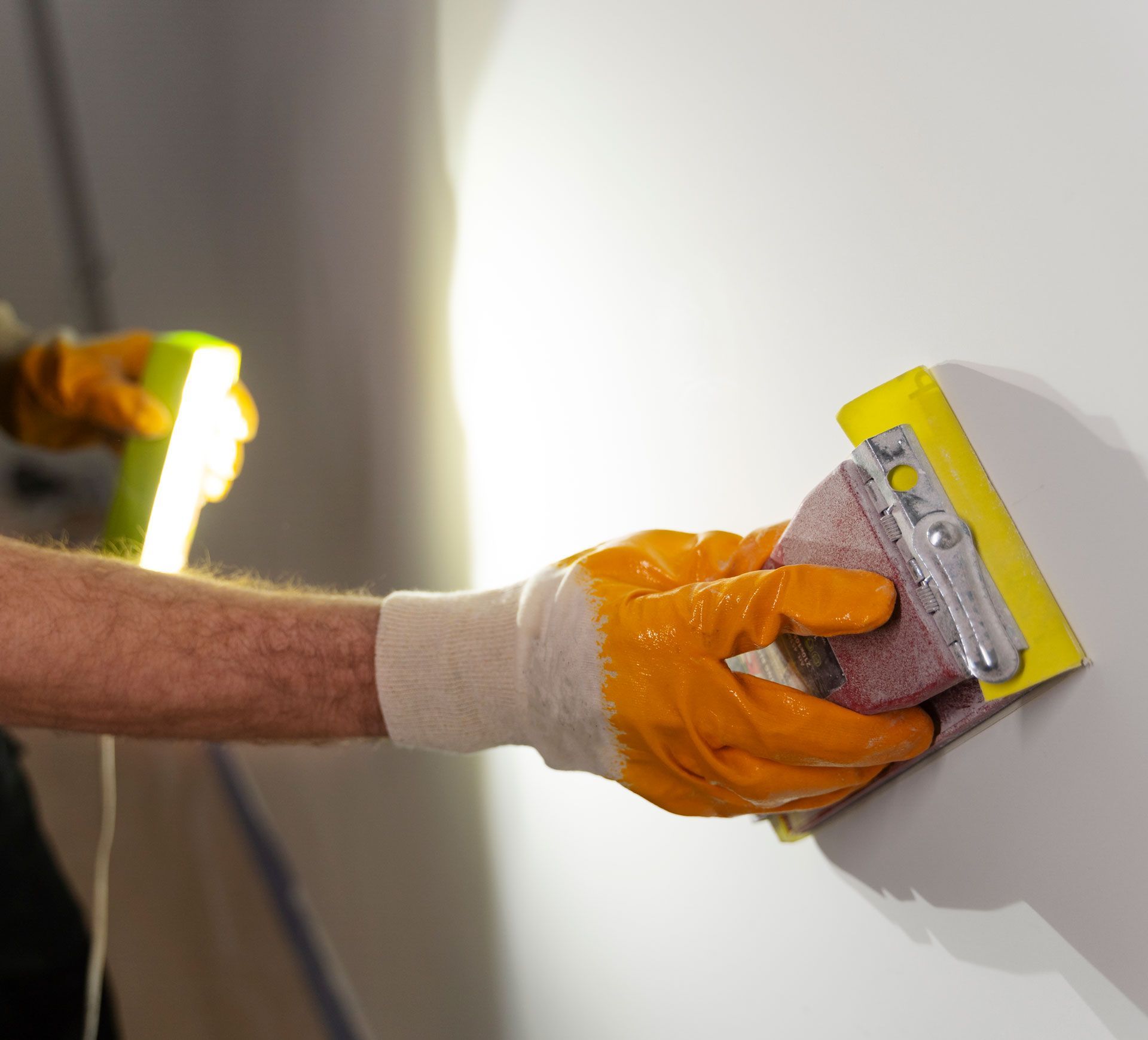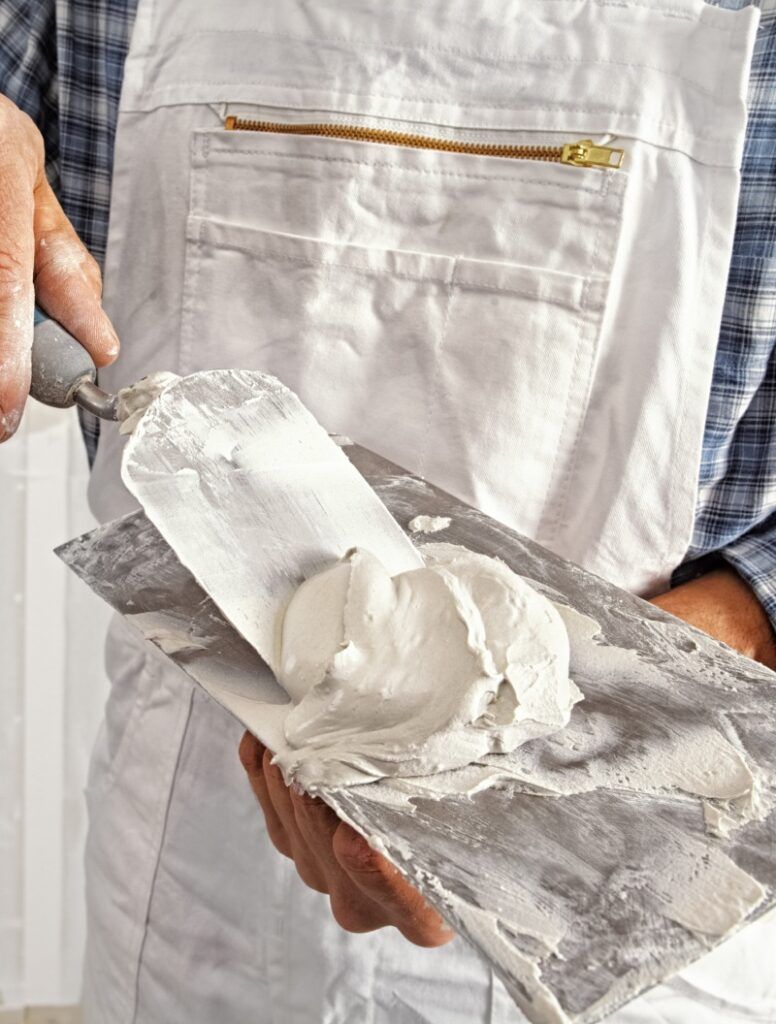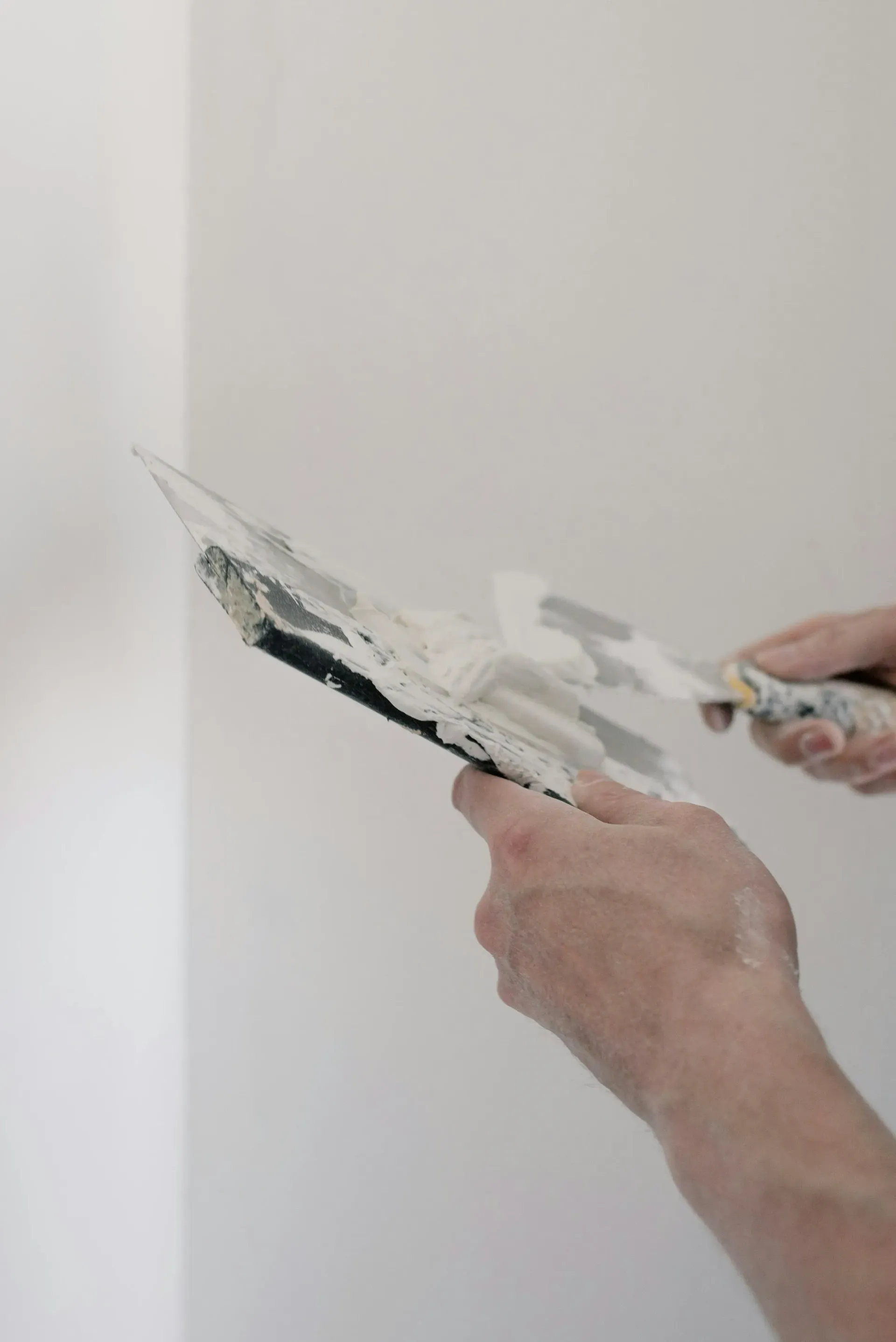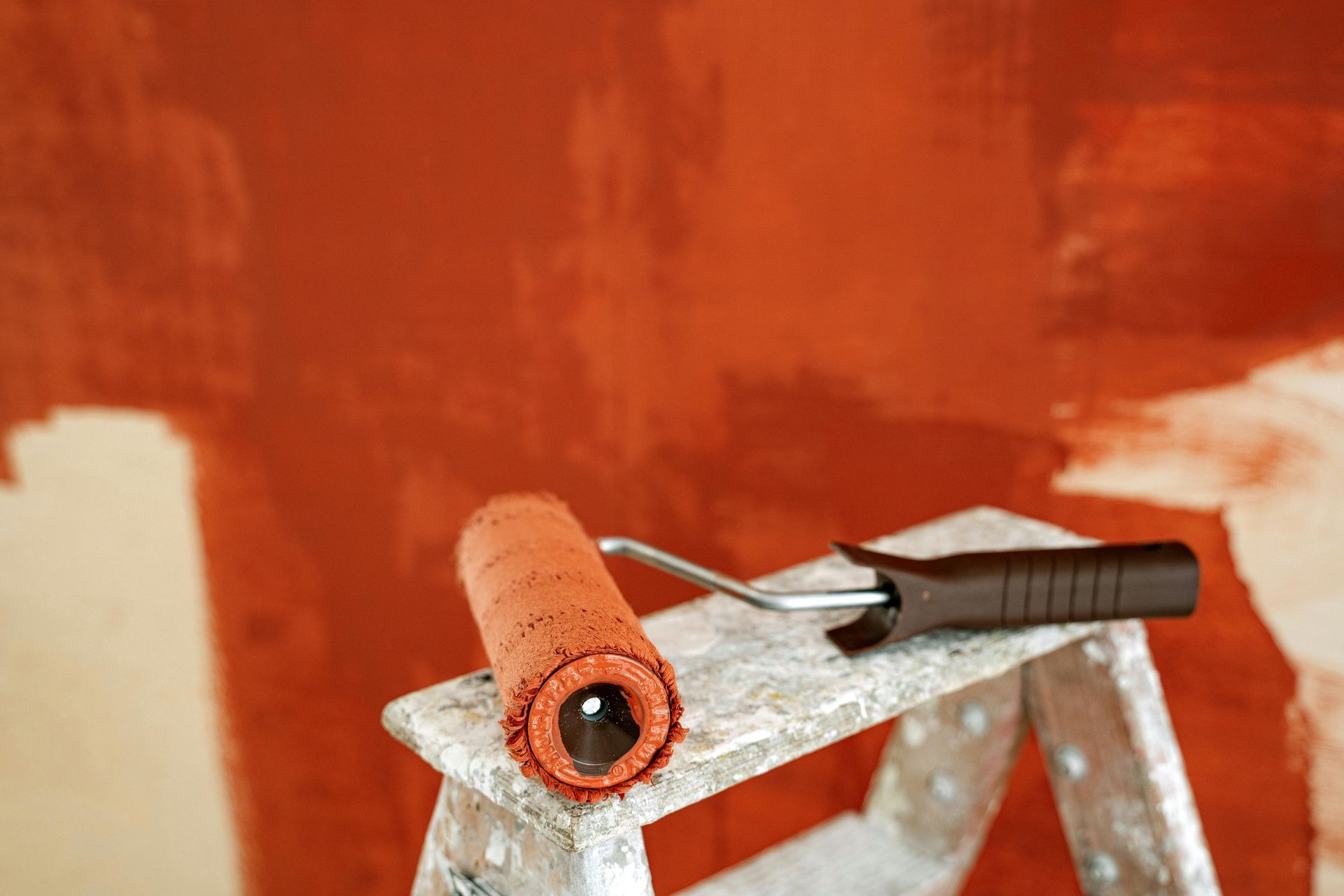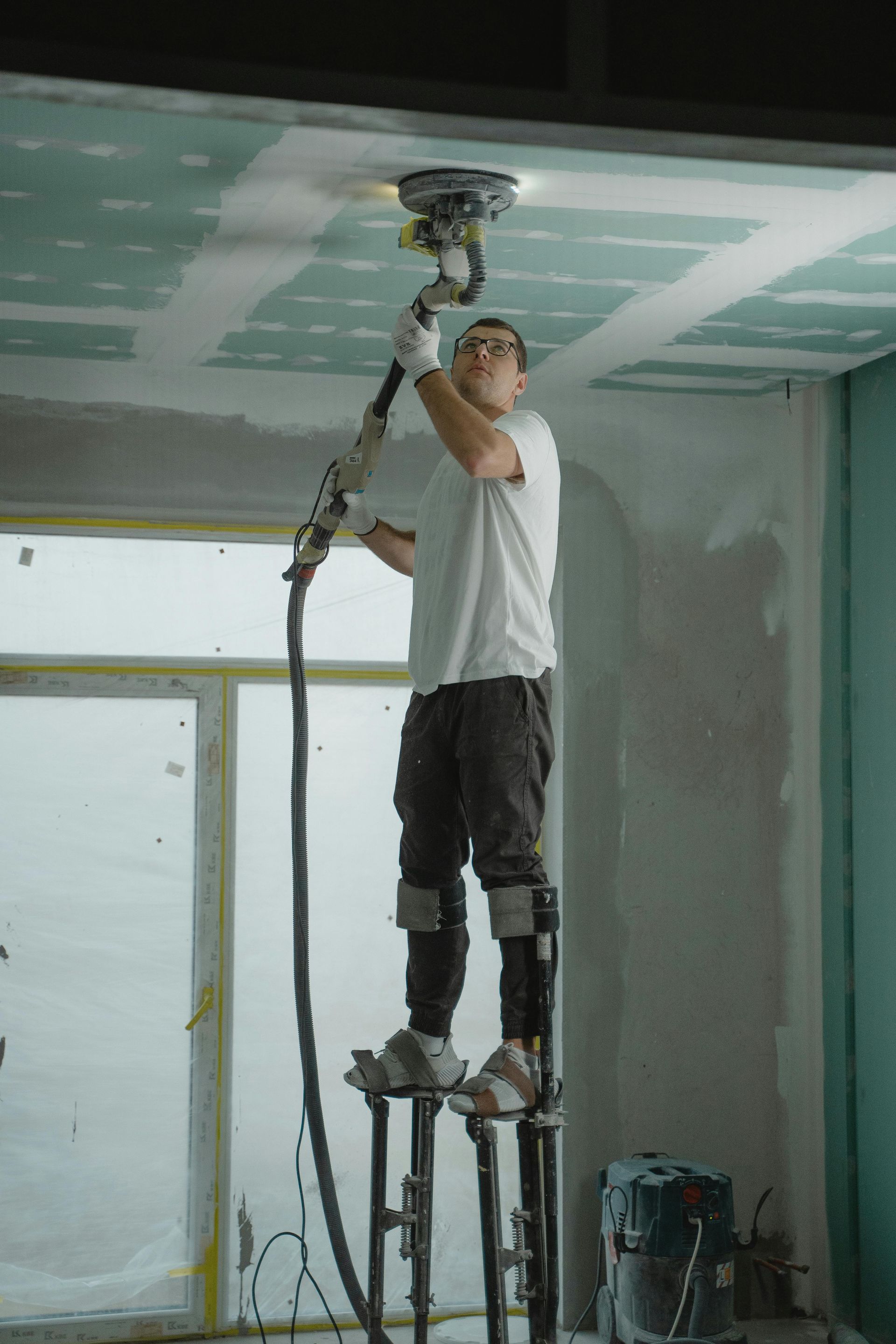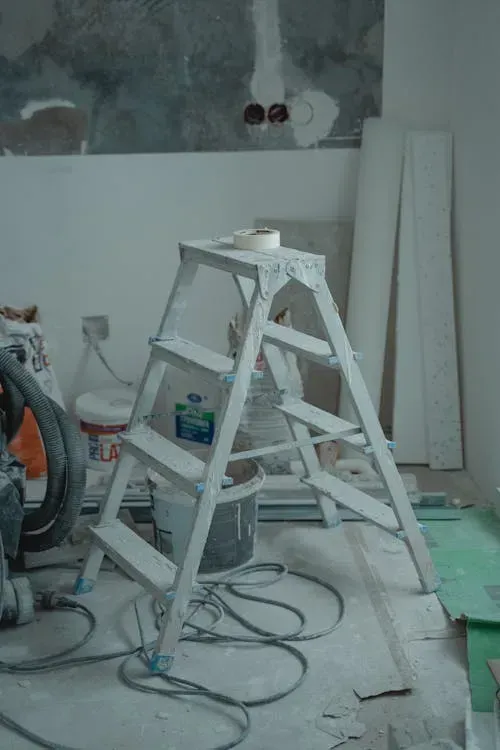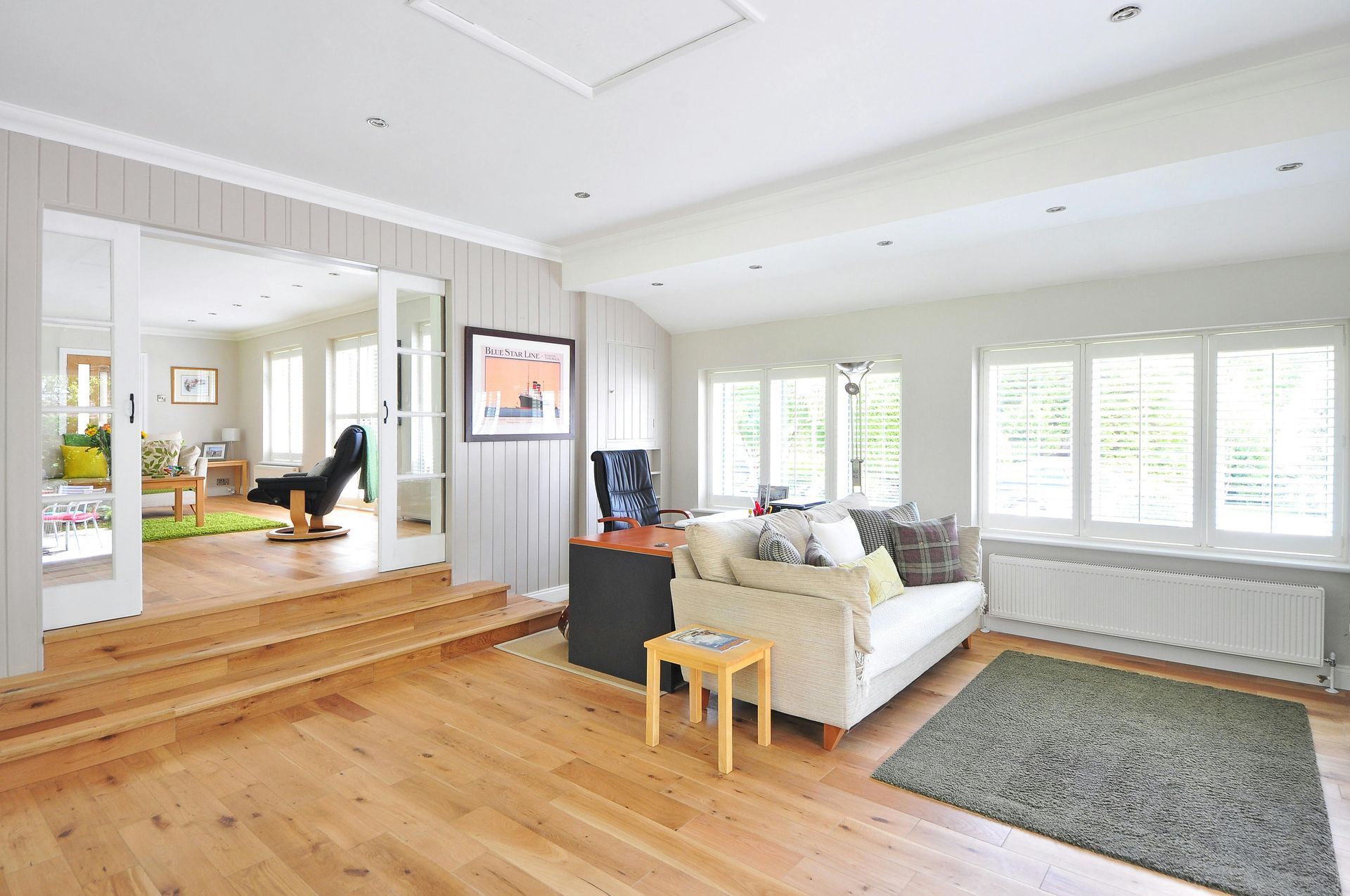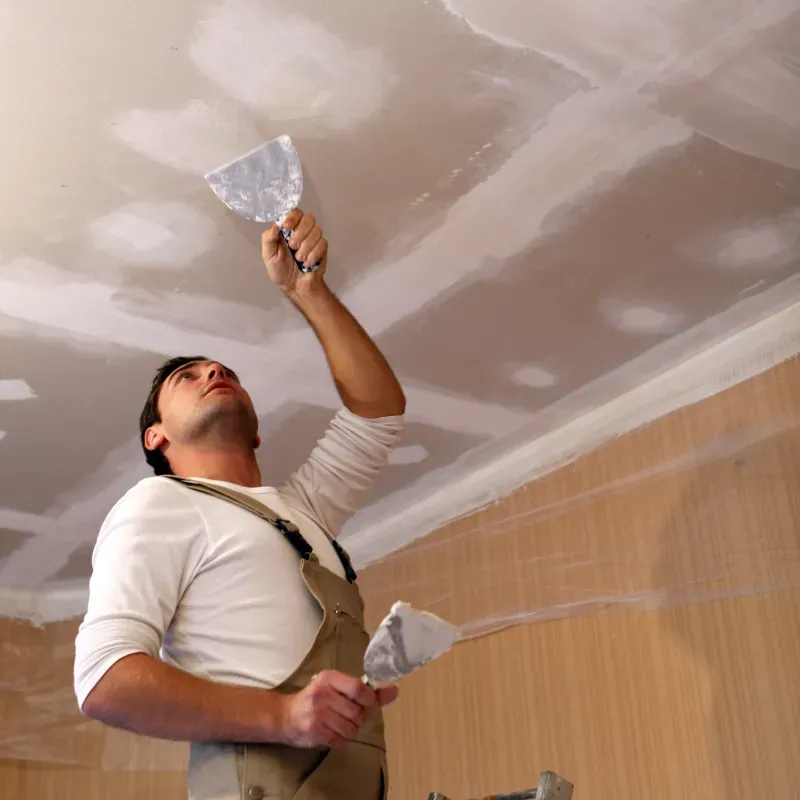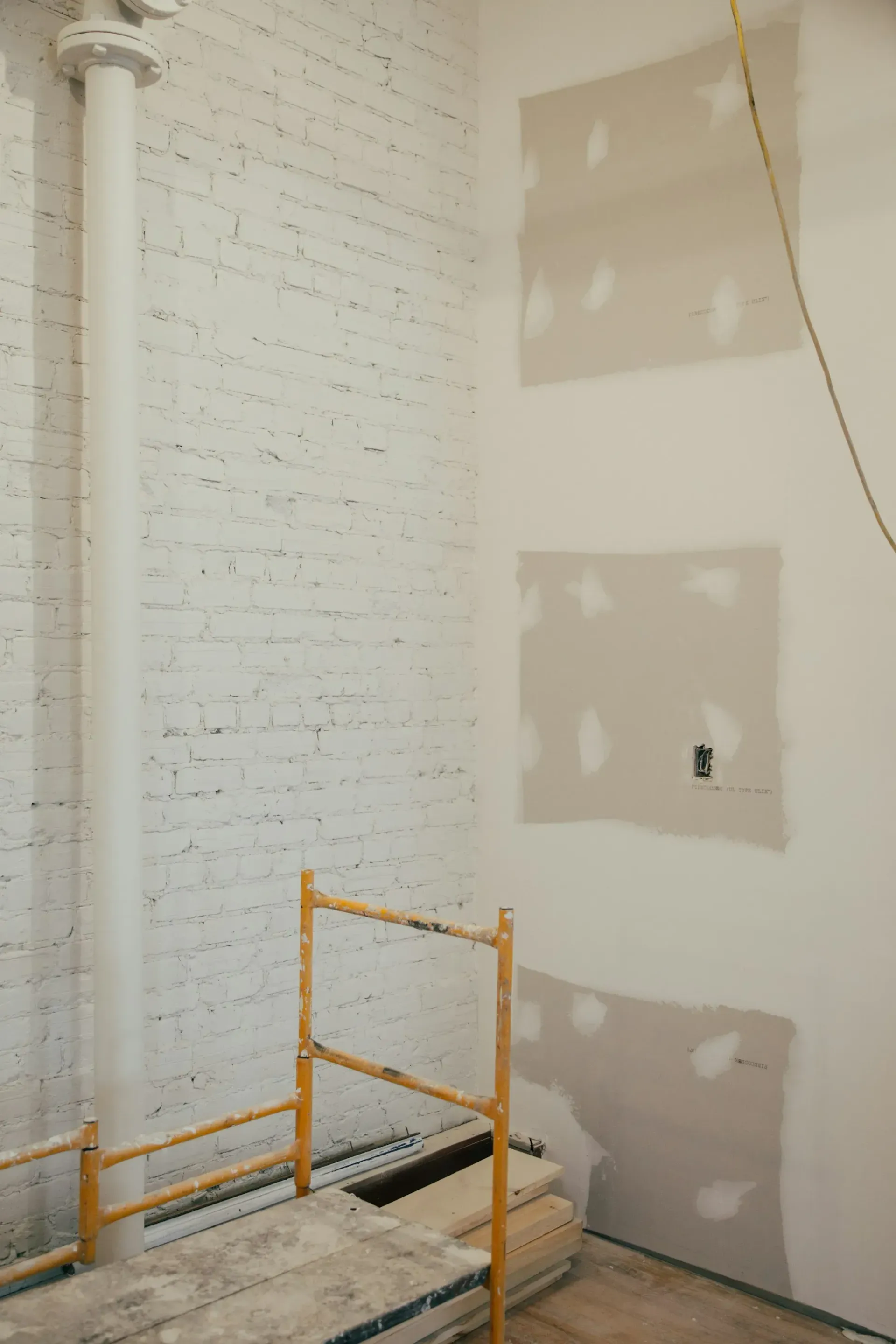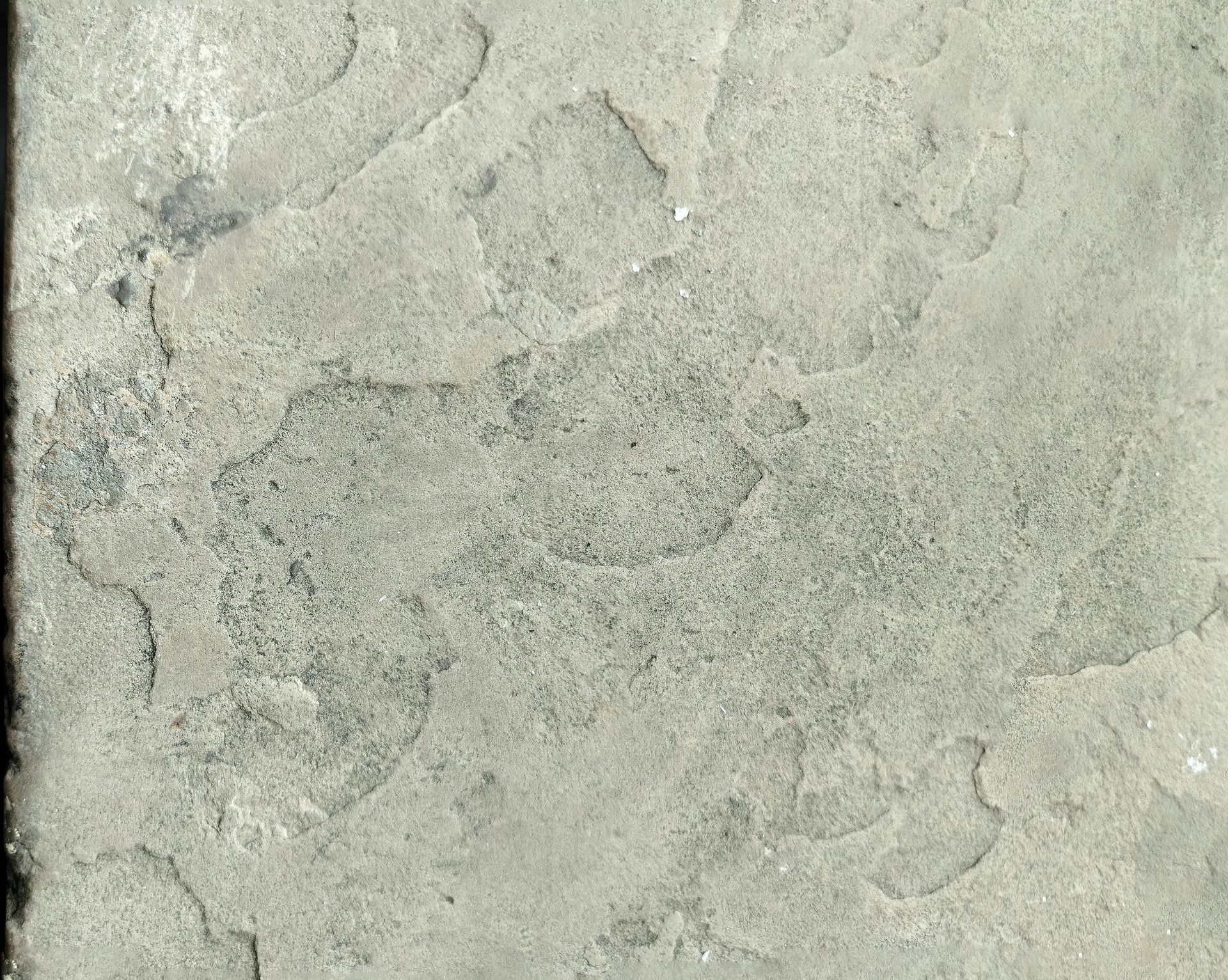
Why Choosing the Right Drywall Matters
Drywall is a key component of modern construction, providing a smooth, durable surface for walls and ceilings. However, not all drywall is the same. The type you choose affects moisture resistance, fire safety, soundproofing, and overall durability.
Using the wrong drywall in the wrong place can lead to mold growth, structural damage, or even safety hazards. For example, standard drywall will not hold up in a damp basement, and it will not slow a fire the way fire-rated drywall can.
This guide will explain the different types of drywall, their best applications, and how to make the right choice for your project.
Choosing the Right Drywall Importance
Drywall does more than create smooth walls. It protects against
moisture, fire, and noise, and using the wrong type can lead to costly problems. Many homeowners and contractors
make the mistake of installing the same drywall throughout a building, but not all drywall performs the same in every environment.
Common Mistakes When Choosing Drywall
- Using standard drywall in high-moisture areas. Regular drywall absorbs moisture, which can lead to mold and structural damage.
- Skipping fire-resistant drywall where it’s required. Garages, furnace rooms, and shared walls in apartments require fire-rated drywall by code.
- Ignoring soundproofing in noisy areas. Standard drywall does little to block sound, leading to unwanted noise between rooms.
- Choosing the wrong thickness. Thicker drywall improves durability and soundproofing, while thinner sheets work better for ceilings and curved surfaces.
Key Factors to Consider
Before selecting drywall, think about:
- Location: Will it be installed in a dry, damp, or high-traffic area?
- Building codes: Do fire or moisture regulations apply?
- Noise control: Will soundproofing be important in this space?
- Budget: Higher-performance drywall costs more but prevents future repairs.
Making an informed choice ensures that your walls and ceilings remain durable, safe, and functional for years to come.
Standard Drywall – The All-Purpose Option
What Is Standard Drywall?
Standard drywall, also known as white board, is the most commonly used drywall for interior walls and ceilings. It consists of a gypsum core sandwiched between two layers of paper. This type of drywall is widely available, affordable, and easy to install, making it the go-to choice for most residential and commercial projects.
Best Uses for Standard Drywall
- Living rooms, bedrooms, and hallways where moisture is not a concern.
- Ceilings in dry areas.
- General wall construction in residential and commercial buildings.
Pros and Cons of Standard Drywall
Pros:
✔ Cost-effective and widely available.
✔ Easy to cut, install, and repair.
✔ Compatible with most wall finishes, including paint and wallpaper.
Cons:
✖ Not moisture-resistant—absorbs water and can grow mold.
✖ Offers minimal fire resistance unless treated with additives.
✖ Does little to reduce noise between rooms.
Standard drywall works well for most indoor spaces, but in areas exposed to moisture, fire, or noise, a specialized drywall type is the better option.
Moisture-Resistant Drywall – Fighting Mold and Humidity
What Is Moisture-Resistant Drywall?
Moisture-resistant drywall, often called green board or blue board, has a water-resistant coating that helps prevent moisture absorption. While it is not completely waterproof, it is designed to withstand higher humidity levels than standard drywall.
Best Uses for Moisture-Resistant Drywall
- Bathrooms and kitchens where steam and humidity are common.
- Laundry rooms where condensation can accumulate.
- Basements where moisture levels tend to be higher.
Moisture-Resistant Drywall vs. Waterproof Materials
Many homeowners mistake moisture-resistant drywall for waterproof drywall. While it helps resist moisture, it is not a substitute for cement board in areas with direct water exposure, such as shower walls. In those cases, a cement backer board is a better option.
Pros and Cons of Moisture-Resistant Drywall
Pros:
✔ Helps prevent mold and mildew growth.
✔ More durable in humid environments.
✔ Works well with tile and other wall finishes.
Cons:
✖ Costs more than standard drywall.
✖ Not fully waterproof—still needs proper ventilation.
✖ Heavier and slightly harder to install.
For areas prone to moisture, choosing the right drywall can prevent long-term water damage and protect indoor air quality.
Fire-Resistant Drywall – Safety First
What Is Fire-Resistant Drywall?
Fire-resistant drywall, commonly known as
Type X or Type C drywall, contains
glass fibers in its gypsum core, making it more resistant to heat and flames. Unlike standard drywall, which burns quickly under fire, fire-resistant drywall
slows the spread of flames and can help contain fires for a set period.
Best Uses for Fire-Resistant Drywall
- Garages and furnace rooms where fire hazards are higher.
- Shared walls in duplexes, apartments, and townhomes to meet fire codes.
- Ceilings in multi-story buildings for added fire protection.
Understanding Fire Ratings
Fire-resistant drywall is rated by the time it can withstand fire exposure before breaking down. Common options include:
- 30-minute fire-rated drywall for light protection.
- 60-minute (Type X) drywall for standard fire resistance.
- 90-minute (Type C) drywall for maximum fire protection.
Many local building codes require fire-resistant drywall in certain areas of a home or commercial space, especially around garages, utility rooms, and stairwells.
Pros and Cons of Fire-Resistant Drywall
Pros:
✔ Slows fire spread and provides extra time for evacuation.
✔ Increases safety and helps meet building code requirements.
✔ More durable than standard drywall.
Cons:
✖ More expensive than regular drywall.
✖ Heavier and slightly harder to install.
✖ May require multiple layers to meet fire codes.
For areas where fire protection is a priority, installing fire-resistant drywall is a smart investment in safety and often required by law.
Soundproof Drywall – The Ultimate Noise Barrier
What Is Soundproof Drywall?
Soundproof drywall is designed to reduce noise transmission between rooms. Unlike standard drywall, it has multiple layers of gypsum and is often reinforced with viscoelastic polymers or fiberglass to absorb and dampen sound vibrations. This makes it an effective choice for areas where privacy and quiet are important.
Best Uses for Soundproof Drywall
- Home theaters and music rooms to prevent sound leakage.
- Apartments, condos, and shared walls to minimize noise between units.
- Office spaces and conference rooms to improve speech privacy.
- Bedrooms and nurseries where a quieter environment is needed.
How Soundproof Drywall Works
Standard drywall does little to block sound because sound waves pass through easily. Soundproof drywall, on the other hand, uses denser materials and sound-dampening technology to absorb and slow down noise transmission.
For even better results, contractors often combine soundproof drywall with:
- Acoustic insulation in wall cavities.
- Resilient channels to decouple drywall from wall studs.
- Double-layer drywall with Green Glue for extra sound absorption.
Pros and Cons of Soundproof Drywall
Pros:
✔ Reduces noise transfer between rooms.
✔ Ideal for privacy in residential and commercial spaces.
✔ Works well when combined with other soundproofing techniques.
Cons:
✖ More expensive than standard drywall.
✖ Heavier and requires specialized installation.
✖ Not 100% soundproof—best used alongside other noise-reducing methods.
If noise control is a priority, soundproof drywall is an effective solution, especially when combined with other soundproofing techniques.
Which Drywall Type Is Best for Your Project?
Choosing the right drywall depends on where it will be installed and what kind of protection you need. Each type has its strengths, and in many cases, a combination of drywall types works best for a home or commercial space.
Best Drywall for Different Areas
- Living rooms, bedrooms, and hallways: Standard drywall works well in these dry, low-moisture areas.
- Bathrooms, kitchens, and basements: Moisture-resistant drywall prevents mold and moisture damage.
- Garages, furnace rooms, and shared walls: Fire-resistant drywall helps slow the spread of flames and meets building codes.
- Home theaters, offices, and multi-unit housing: Soundproof drywall reduces noise transfer for a quieter space.
Mixing Different Drywall Types
In many cases, using a mix of drywall types is the best approach. For example:
- A bathroom wall might have moisture-resistant drywall inside the room but fire-resistant drywall on the garage-facing side.
- A
home office could have
soundproof drywall on shared walls while using
standard drywall elsewhere.
Why the Right Drywall Matters
Using the right drywall helps prevent long-term damage, improves safety, and enhances comfort. It also ensures that your project meets local building codes and avoids costly mistakes down the line.
If you are unsure which type to use, consulting a professional can help you make the best decision for your space.
Get Expert Drywall Services in South Central PA
Choosing the right drywall for your project is essential for durability, safety, and overall performance. Whether you need moisture-resistant drywall for a bathroom, fire-rated drywall for a garage, or soundproof drywall for a quiet space, making the right decision can save you time, money, and future repairs.
If you are looking for professional drywall services in Hershey, Harrisburg, Gettysburg, Lancaster, York, Reading, or Chambersburg, trust Patch Boys of South Central PA to get the job done right. Our skilled team specializes in drywall installation, patching, skim coating, ceiling repair, and framing. No matter the size of your project, we deliver precise, high-quality craftsmanship to meet your needs.
Let Patch Boys of South Central PA handle your drywall needs with expertise and efficiency. Contact us today to schedule a consultation and get the best drywall solutions for your home or business.
